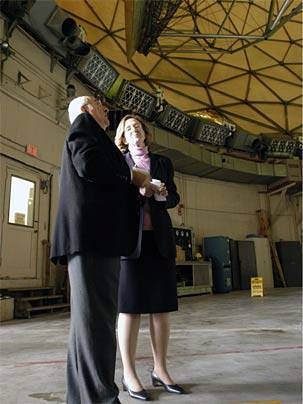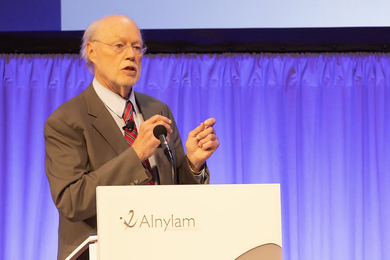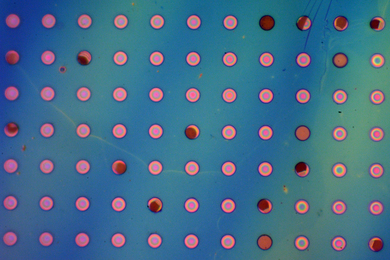MIT's Haystack Observatory and Lincoln Laboratory are celebrating four decades of radio astronomy and radar studies made possible by a collection of large radio telescopes and high-power radars at their research site in Westford, Mass.
Since the 1960s, Haystack's flagship radio facility, a 120-foot antenna, has given scientists and students a powerful tool to study targets ranging from planets in our solar system to distant, energetic objects like quasars. The Haystack antenna also has served as part of the U.S. Space Surveillance program, generating radar images of satellites orbiting Earth.
After 40 years of remarkable service, this venerable instrument is about to undergo a major upgrade that will further drive its capabilities to the forefront of research.
"In a sense, this is history repeating itself at Haystack," said Joseph Salah, Haystack director. "When the antenna was first constructed by Lincoln Laboratory in 1964 it was hailed as one of the most precise scientific instruments ever built, and it has served us well. Now we're about to upgrade it, and once again it will be leading the way in imaging applications, in radio astronomy research and in education."
The upgrade is currently in the design phase; major work is slated to begin in 2006. The large radome enclosing the antenna will be lifted off so that the existing antenna can be removed and a new one installed. A new radar transmitter and processing system will be integrated and tested in 2007-2009. The renovations will allow image resolutions about 10 times better than at present, making the antenna a premier radio astronomy facility for research and education.
A reception will be held today at Haystack to celebrate the facility's four decades of scientific accomplishment and to look towards future research areas.
Instruments associated with Haystack include the Millstone Hill Observatory, which conducts radar observations of the Earth's upper atmosphere; a deuterium array that will assess the abundance of dark matter in the Universe; the Westford radio telescope that makes measurements of the Earth's orientation parameters; and a powerful computer used for processing astronomical and geodetic data obtained from radio interferometer experiments.
In the 1960s, the Haystack radar was used to image the surface of the moon to find suitable landing sites for the Apollo missions. It mapped both Venus and Mars, and was used in the fourth test of Einstein's theory of general relativity.
In more recent times, the radio telescope has been part of the Very Long Baseline Interferometry (VLBI) network, which uses widely separated antennas to image sources in deep space such as quasars and galaxies with fine resolution, pinpoint extragalactic masers and map star-forming regions in our galaxy. Many of the techniques used today in VLBI were invented and developed at Haystack, and the first silicon monoxide maser image of a young stellar object was performed with Haystack's antenna leading a world-wide array of high frequency radio telescopes. The same VLBI technique was turned to studying the Earth's surface, and in the 1980s, the first direct measurement of contemporary plate motions was made with the participation of the Haystack antenna.
A version of this article appeared in MIT Tech Talk on October 27, 2004 (download PDF).







